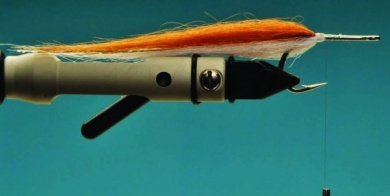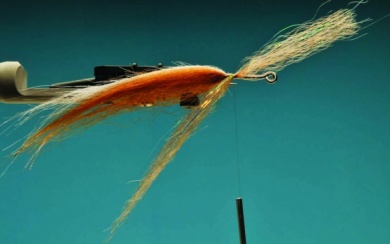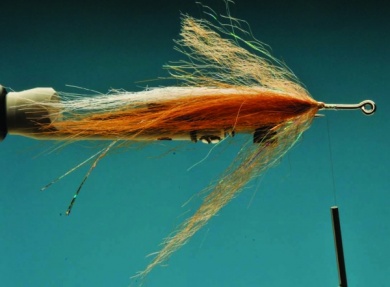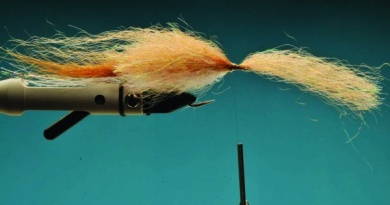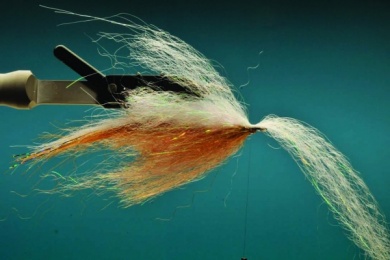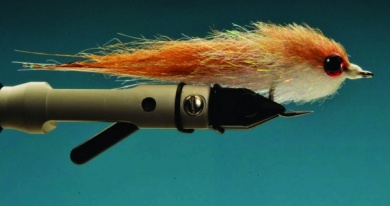Some tiers choose not to use synthetic materials because they cannot obtain the same results as with the naturals. For example, the way deer-hair muddler heads push through water make it incredibly effective when fishing for trout, golden dorados and pretty much every fish that preys on others. Ther View more...Some tiers choose not to use synthetic materials because they cannot obtain the same results as with the naturals. For example, the way deer-hair muddler heads push through water make it incredibly effective when fishing for trout, golden dorados and pretty much every fish that preys on others. There are ways to tie synthetic materials that will achieve that same effect; plus, these come in many colors, are firm and have good transparency.Kinky Muddlers are tied in a way that the muddler head size is achieved. We can trim the fly to resemble the silhouette and underwater moves of any fish. We can even do this in the river and not ruin the fly, like it happens with feather flies.I tie several models and vary the tail material and type of eyes, not changing the body. We can add some dots, stripes and details with permanent markers.Kinky Muddlers have a reserved place in my fly boxes because of their versatility, effectiveness and because they are long lasting flies.
Move the mouse over the image to zoom in the fly.
Touch the image to zoom in the fly.

List of materials
Tying MaterialsHook: Daiichi or Mustad Sea hooks.Thread: transparent Uni Mono.Tail: Brown and White Craft Fur in this case.Body: Brown and White SF fibers.Eyes: holographic adhesive eyes, glued with epoxy.
Steps
Step 1
Use the transparent monofilament to make a base on the hook and shape the tail with Craft Fur, placing the brown strap on top and the white one below. Some cianoacrilate makes it more durable.
Step 2
At the back of the fly, tie an SF brown strap, with a 45° inclination. It should remain horizontal.
Step 3
Bend the brown strap towards the back making a “V” shape.
Step 4
Turn the hook upside down and tie an SF white strap. Make the “V” shape too. Keep tying brown straps on top and white ones below to shape the body, leaving some space before the hook eye.
Step 5
Tie an SF brown strap on top, pointing towards the back, to cover the back of the fly.
Step 6
Bend the brown strap and, turning the hook, tie a white one bending it towards the back to finish the head tidily. The top brown strap shapes the back of the fly, the lower one shapes the belly, and the body is created with side straps that make it bulkier in a special way.
Step 7
Trim with long scissors. Glue the eyes so they last longer and remain attached to the fibers.

